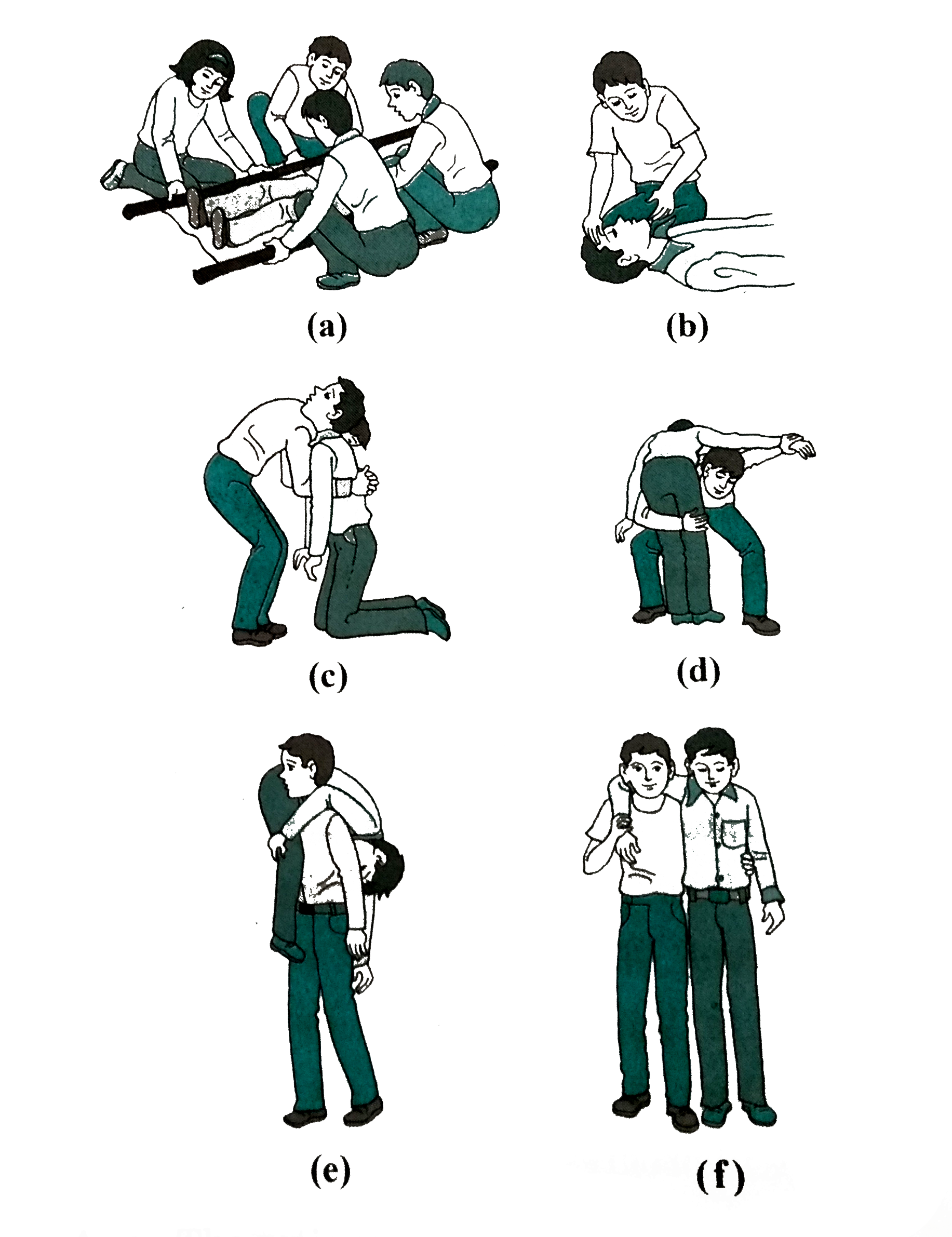Observe :
Give the reference of following pictures and explain importance of each of those in disaster management. Which are other such activities?

Text Solution
The actions shown in the above pictures are as follows:
(a) The patient is made to lie on the stretcher. He must be unconscious and injured to greater extent, so that he cannot move by himself.
(b) The patient is helped by giving artificial respiration. Probably the victim is suffocated and needs oxygen supply.
(c) and (d) The patient is being picked up. Most probably the patient is unconscious.
The unconscious person who cannot move by himself is carried by these two methods. In method 'c', the weight of the patient is less and hence he can be lifted as shown in the picture. In picture 'd' the victim has to be lifted in other way, may be due to his greater body weight.
(e) The patient is carried on the back as in 'carrying piggy back' position. He too is unconscious and needs to be shifted for medical treatment.
(f) The patient in this picture is carried by 'human crutch method'. When victim's one leg is injured, he cannot walk without support. Hence, he needs to be carried in such a way.
In all the above methods, the injured person at the time of disaster is transported to hospital or dispensary for further medical help. The primary first-aid is given to the victim. Now the volunteer is taking him for further treatment. Such rescue activities depend upon the type of disaster and the extent of the injury. Hence the methods will be of different nature.
|
Topper's Solved these Questions
- DISASTER MANAGEMENT BOOK - NAVNEET PUBLICATION - MAHARASHTRA BOARDCHAPTER - DISASTER MANAGEMENT EXERCISE - Project-based MCQs :
6 Videos
- DISASTER MANAGEMENT BOOK - NAVNEET PUBLICATION - MAHARASHTRA BOARDCHAPTER - DISASTER MANAGEMENT EXERCISE - Can you recall ?
11 Videos
- DISASTER MANAGEMENT BOOK - NAVNEET PUBLICATION - MAHARASHTRA BOARDCHAPTER - DISASTER MANAGEMENT EXERCISE - Questions based on tables and charts :
2 Videos
- CORRELATIONSBOOK - NAVNEET PUBLICATION - MAHARASHTRA BOARDCHAPTER - CORRELATIONSEXERCISE - Assignment
1 Videos
- DISTINGUISH BETWEEN BOOK - NAVNEET PUBLICATION - MAHARASHTRA BOARDCHAPTER - DISTINGUISH BETWEEN EXERCISE - Carbon Compounds
2 Videos
Similar Questions
Knowledge Check
Which of the following is not an importance of management?
AManagement increases efficiencyBManagement helps in achieving individual goals onlyCManagement creates a dynamic organisationDBoth (a) and (c)
Explain each aspect of the disaster management of earthquake.
View SolutionGive one important use of each of the following: Bithional.
View SolutionGive one important use of each of the following: Paracetamol.
View SolutionGive one important use of each of the following :
Equanil
View SolutionGive one important use of each of the following: Streptomycin.
View SolutionGive one important use of each of the following :
Morphine
View SolutionGive one important use of each of the following: Chloramphenicol.
View Solution

